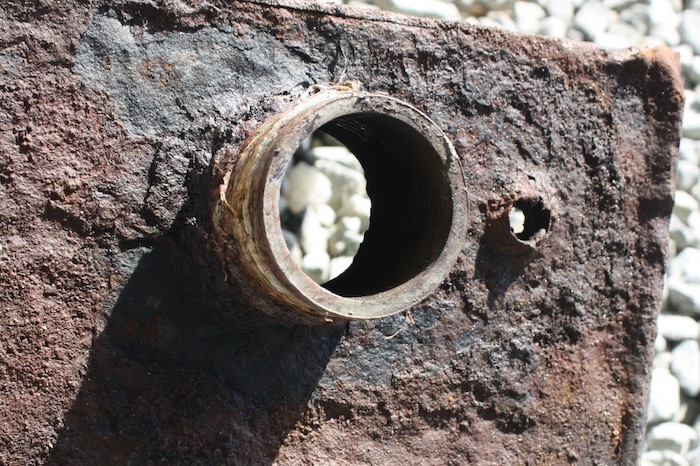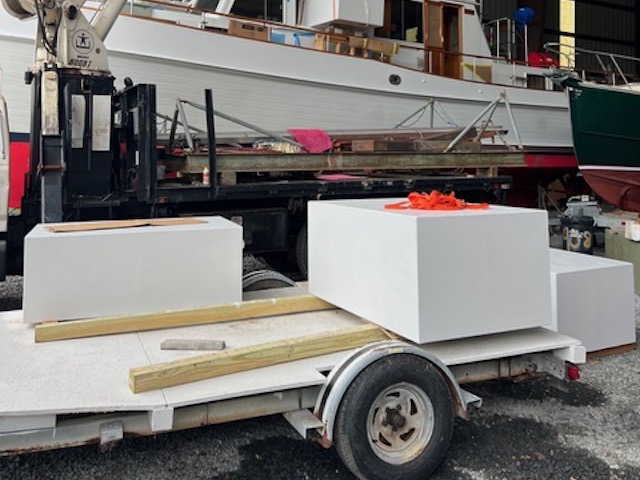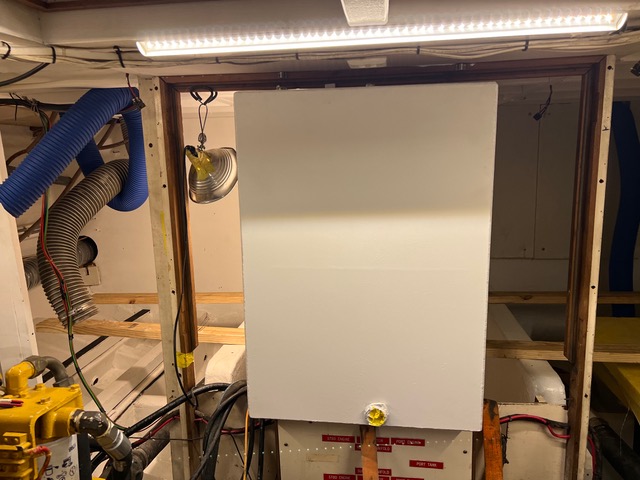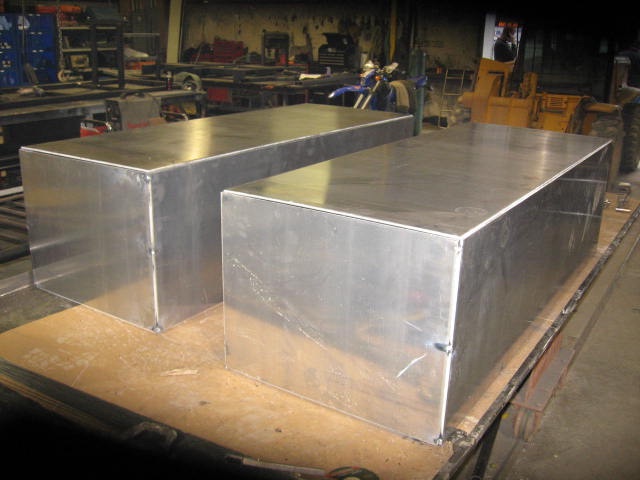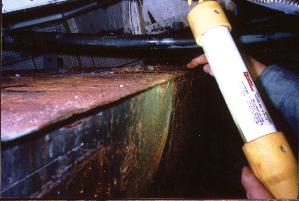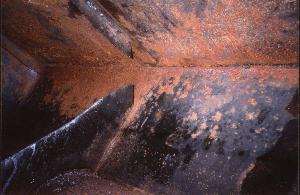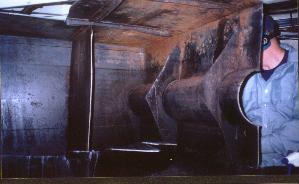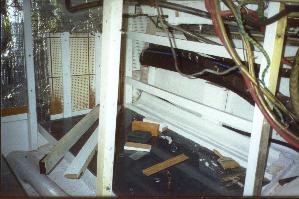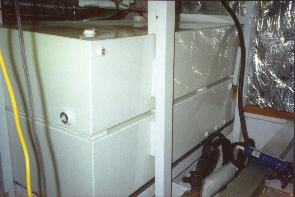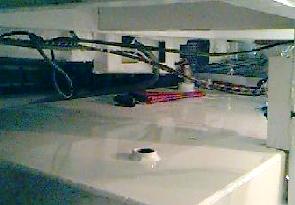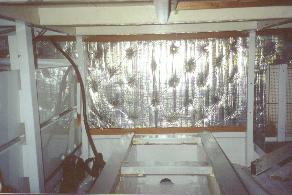Grand Banks Fuel Tank Replacement
Fuel and Water Tanks Will Fail on Your Grand Banks or Eastbay Yacht
Replacing fuel tanks, in particular, is a must-do maintenance reduction investment for your older Grand Bands or Eastbay Yacht. If you have the original tanks in your boat, it is now a serious resale issue and will likely cause you expensive and frustrating repairs in the near future if you don’t aggressively keep the tanks painted and dry.
New Set of Aluminum Tanks Before Epoxy Coating
Being proactive to replace those rusting fuel tanks with an experienced yard can save you thousands of dollars and mean worry free cruising again. Rusting fuel tanks on older Grand Banks is expensive and frustrating.
If you are looking to buy a Grand Banks with newer tanks and they are not painted, deduct the cost of having the tanks epoxy painted or walk away from the purchase.
These rusting tanks are usually the direct result of old worn-out teak decks which are leaking around the fuel fill and holding tank hose thru-deck connections.
At Oxford Yacht Agency at our Dickerson Harbor Boatyard, we have replaced hundreds of tanks with a proven record of long lasting new tanks and getting our customers back on the water in a matter of days, not months. Our proven processes will be more cost effective and provide real value when you sell your Grand Banks.
Custom Fuel Tank Replacement Process
So, you have a tank problem…
One of the most frustrating and expensive problems found in older Grand Banks is the problem of rusting fuel tanks. Face it, these tanks are enormous and expensive to remove. Many yards are actually cutting the sides or the bottom out of the boat to replace them. There is no reason to destroy the integrity of the hull to replace the tanks. We have found a way around this with a solution that should make any future problems much easier to deal with.
How can you tell if your tanks actually need replacing?
If your tanks are only rusting on the outside, you can probably repair them. Some flaking is not a severe problem as the metal on these tanks is substantially thick. As you can see on the right – this tank is rusting on the inside. In addition to the obvious leaking problem, you can expect to find continuous rust in your fuel.
The Removal.
There is only one way to get these tanks out – perseverance, brute strength and lots of reciprocating saw blades. The tanks were removed in lots of pieces which were cut to a size small enough to handle. It was still necessary to remove the generator and obviously most of the fuel system (the old copper fuel lines have been replaced with top of the line Aeroquip hosing.
Start with a good foundation.
While the tanks are out, it is a good opportunity to do some serious engine room clean up. The hull sides behind the tank were painted, the hoses and wiring checked, and everything made spotless. We used a base of solid PVC sheet for the tanks to rest on which is actually cheaper than painted plywood with the added benefit of being virtually non-permeable to diesel fuel and water. In this boat we replace a lot of the old acoustical soundproofing with a foil-faced lead lined sound insulation.
Installing the new tanks.
Our solution to the new tank replacement was to use four tanks instead of the standard two. Two tanks are stacked on each side with a large connecting hose joining each stack. The total capacity has not changed, but the smaller tanks are able to be brought in the boat through the hatch (and removed the same way if that need ever arises). Our tanks are rust-treated and Awlgripped for maximum longevity.
Other Benefits.
In the finished installation we are now able to access the tops of the tanks. Before there was only a few inches of clearance between the tank tops and the bottom of the deck. Now the tanks can be visually inspected and if any deck leaks occur they can be spotted and fixed with minor difficulties.
How to protect your tanks.
The best fix for tanks is prevention. Most tank rusting is caused by leaking deck fittings. The water has a tendency to run down the deck fill hose and pool out to the back of the tank where it is not visible. Once the paint on the tank has lost it’s adherence to the tank, the water will seep down under the paint and stay there. Interior rusting may be the result of the same leaking as above seeping into the tank through a loose fitting or by fuel contaminated by water. If you see water in your Racor, there is probably a lot more where that came from.
